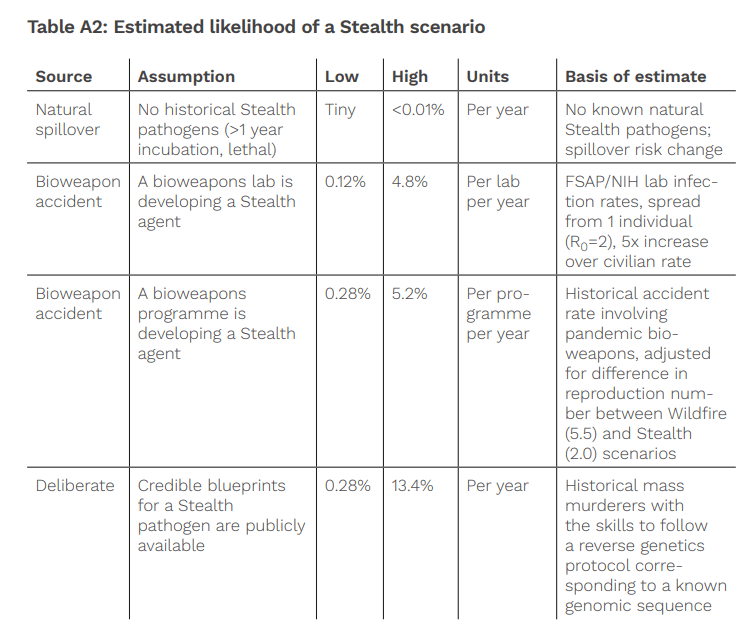Executive summary
Pandemic security aims to safeguard the future of civilization from exponentially spreading biological threats. Despite the world's failure to contain SARS-CoV-2, the existence of far more lethal and transmissible pathogens that afflict animals and growing access to increasingly powerful biotechnologies, no analyses of worst-case scenarios and potential defenses have been published. Here we outline two distinct mechanisms by which pandemic pathogens transmissible between humans could cause societal collapse. In a "Wildfire" pandemic, the justifiable fear of a lethal and highly contagious respiratory agent released in multiple travel hubs leads to the breakdown of essential services. In a "Stealth" pandemic, a rapidly spreading virus with a long incubation period analogous to HIV infects most of humankind. We explain why current pandemic preparedness measures such as rapid vaccines and N95 masks will reliably fail against these threats and outline novel strategies and technologies capable of safeguarding civilisation.
Key takeaways
- Nations cannot yet contain natural, accidental or deliberate pandemics.
- Access to severe pandemics will expand with the ability to program biology.
- If too many essential workers die or refuse to work, societies will collapse.
- A Wildfire pandemic is highly lethal and transmissible enough to infect most essential workers who are taking currently available precautions.
- Collapse can be prevented by providing essential workers with pandemic-proof personal protective equipment (P4E). (Essential workers are those who must deliver food, water, power and law enforcement without any interruptions.)
- Others can remain safely at home until P4E is available for everyone.
- Once the population is protected, the virus can be locally eradicated.
- A Stealth pandemic spreads widely with few symptoms and causes severe harm years later.
- Societal collapse can be prevented via early warning, credibility, cures, P4E and healthy buildings.
- Early warning: deep metagenomic sequencing offers reliable detection.
- Credibility: expert responders can assess threats and encourage action.
- Cures: swift medical research can offer hope for the infected.
- P4E: people will need protective equipment that they can trust to block transmission.
- Healthy buildings: the use of germicidal lights and ventilation can prevent indoor infections.
- Societal collapse can be prevented via early warning, credibility, cures, P4E and healthy buildings.

I am surprised I only now discovered this paper. In addition to Jeff's excellent points above, what stood out to me was that the paper contained both likelihoods of different scenarios as well as what I think is some of the more transparent reasoning behind these likelihood numbers. And the numbers are uncomfortably high!
There is more detail on how the likelihoods were arrived at in the paper itself - the last column is only a summary.